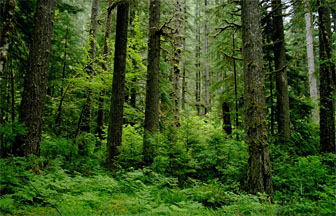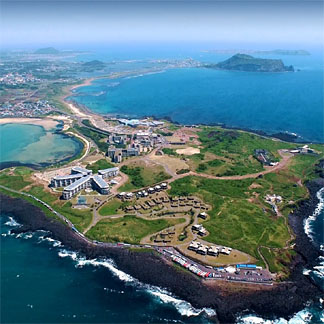Climate Change: Winners and Losers
Lesson 5: Winners and Losers
Page 1 Page 2: Winners and Losers Summary
Winners and Losers:
As we said at the beginning of this unit, changes in the natural world are never all good or all bad. It is usually more constructive to examine issues like climate change in terms of who benefits and who suffers because of the change.
So let's see if we can figure out who, or what, some of these "winners" and "losers" will be.
Life in general. If we consider all life on Earth--bacteria, fungi, plants and animals--we would probably arrive at a pretty startling conclusion: over the long term, climate change is good for life in general. Why? Because of the uneven increase in temperatures that we discussed in Lesson 3. Cold places on Earth will warm up more than hot places.
In general, warmer places on Earth support more life--and more varied forms of life--than cold places. As global temperatures rise, the frozen arctic tundra and treeless mountain snowcaps will decrease in area, while the range of rain, temperate and boreal forests will increase.

There will be exceptions--expanding desert belts, for example--but in general, habitats that can support a lot of life will expand while habitats that cannot will contract.
Animal life. The situation becomes less encouraging when we look at specific animals, however. Many species will be threatened by climate change. It is very unlikely that any of our grandchildren will ever see a polar bear outside of a zoo, to give just one example.
As the CO2 in the atmosphere increases, more of it will get washed into the oceans by rain, where it will form carbonic acid. Over time, this will make the ocean more acidic.

We know that coral reefs are very sensitive to ocean chemistry, and large coral reefs are already showing the destructive effects of increasing acidity. If this trend continues it could be devastating to ocean life, as entire marine ecosystems collapse, and the world's fisheries disappear. If fisheries collapse, many millions of people around the world will lose their livelihoods and their main source of food.
You may have heard that animals are going extinct at an alarming rate. Species extinction is a grave concern, but it is mostly because of habitat loss. We have already cut down most of the world's forests. Our farms, highways, cities and shopping malls have eaten up so much land that many wild animals no longer have a place to live. While climate change will increase the stresses faced by many animals, arresting climate change will not solve the problem of widespread species extinction. To address this, we need to confront the problem of habitat destruction.
Humans. Of all the different forms of life on this planet, humans may have the most difficultly coping with climate change.
First the good news: climate change will bring some welcome benefits to cold nations like Canada and Russia. Vast areas of both countries are currently locked up in permafrost or under ice. As temperatures warm, more land will become available for farming or development. In addition, when the sea ice covering the Arctic Sea melts, new shipping routes will open up, as will new areas for oil and gas exploration.

The bad news is that more people are likely to suffer from climate change than to benefit from it. Climate change has already led to greater extremes in weather, and this trend is likely to increase. We can expect more frequent and more severe hurricanes, cyclones, tornadoes and floods. In wealthier countries we can address these problems by building stronger, more resistant buildings. In poorer countries people may be left to fend for themselves.

Rising Sea Levels. Low elevation countries are at risk from sea level rise. Bangladesh is a good example.

Bangladesh is very densely populated. Much of this country is less than 10m above sea level. Furthermore, the country is divided in half by a large river system. As sea levels rise, flooding will become more frequent and more severe.
Kiribati, a nation of low-lying islands in the Pacific, is another example.

Close to 120,000 people live in Kiribati. Yet most of Kiribati is less than 2m above sea level. It is one of several island nations in danger of completely disappearing under rising seas. Where will these people go?
Migrating Deserts. Many people still rely on farming and herding animals for their livelihoods and/or survival. If deserts move into agricultural areas, wells will dry up, crops and animals will die off, and people will be forced to leave their homes.
Many large population centers rely on snowmelt /or rivers for their water supply. These places could face severe water shortages if snowfall declines or if the rains that feed the rivers were to disappear.

Animals can often migrate in search of better climates. But most people can move only so far before they come up against national borders. Then they are either trapped in place or forced to migrate illegally, often to places that are openly hostile to them. International migration is already a major political issue in the United States and Europe. Imagine the effect on our political and economic systems if international migration increases tenfold within a generation.
Go to Summary